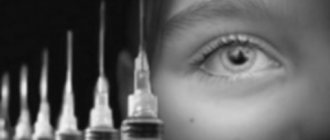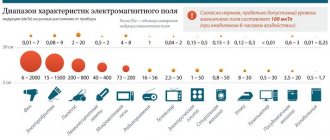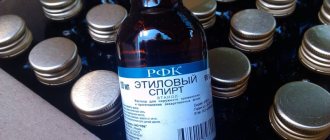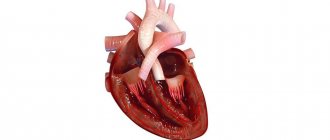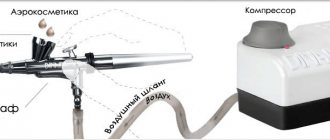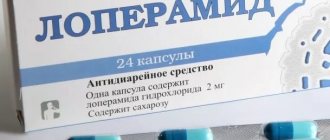Benzene
(
C6H6
,
PhH
) is an organic chemical compound, a colorless liquid with a specific sweetish odor. The simplest aromatic hydrocarbon. Benzene is a component of gasoline, is widely used in industry, and is a raw material for the production of medicines, various plastics, synthetic rubber, and dyes. Although benzene is a constituent of crude oil, it is synthesized on an industrial scale from other components. Toxic, carcinogenic. Contaminant.
Content
- 1. History
- 2 Physical properties
- 3 Chemical properties 3.1 Oxidation reactions
- 7.1 Mechanism of transformation and mutagenic effect of benzene 7.1.1 Molecular mechanism of benzene mutagenesis
Treatment
Treatment of acute intoxication consists of eliminating the symptoms and consequences of contact with a toxic substance. Final recovery may take quite a long period.
Chronic intoxication with benzene and its homologues is treated with glucose with ascorbic acid and a complex of vitamins B, bromine and caffeine. If there are signs of leukopenia, sodium nucleinate and pentoxyl are used to stimulate leukopoiesis. Manifestations of hemorrhagic diathesis are treated with vitamin K, vitamin P, ascorbic acid, and calcium chloride.
Treatment of anemia caused by intoxication consists of the use of typical antianemic procedures - blood and red blood cell transfusions, administration of iron and folic acid supplements.
When signs of toxic hepatitis appear, choline, lipocaine (with cottage cheese), and methionine are used. Toxic encephalopathy is eliminated with glutamic acid, diphenhydramine, vitamins and magnesium sulfate.
After completing the course of treatment, the patient is recommended to limit contact with benzene and its derivatives, and also go on vacation to a sanatorium-resort institution.
Story
For the first time, benzene-containing mixtures formed as a result of the distillation of coal tar were described by the German chemist Johann Glauber in the book Furni novi philosophici
, published in 1651. Benzene as an individual substance was described by Michael Faraday, who isolated this substance in 1825 from the condensate of illuminating gas obtained by coking coal. Soon, in 1833, benzene was obtained by dry distillation of the calcium salt of benzoic acid and the German physical chemist Eilhard Mitscherlich. It was after this preparation that the substance began to be called benzene.
By the 1860s it was known that the ratio of carbon atoms to hydrogen atoms in the benzene molecule was similar to that of acetylene, and the empirical formula was Cn
Hn
. _ The German chemist Friedrich August Kekule began seriously studying benzene, and in 1865 he managed to propose the correct cyclic formula for this compound. There is a well-known story that F. Kekule imagined benzene in the form of a snake made of six carbon atoms. The idea of the cyclical nature of the connection came to him in a dream, when an imaginary snake bit its own tail. Friedrich Kekula was able to most fully describe the properties of benzene at that time.
Notes[ | ]
- ↑ 1 2 Smith JM, HC Van Ness, MM Abbott
Introduction to Chemical Engineering Thermodynamics (English) //
J. Chem.
Educ. - American Chemical Society, 1950. - Vol. 27, Iss. 10. - P. 789. - ISSN 0021-9584; 1938-1328 - doi:10.1021/ED027P584.3 - ↑ 1 2 3 4 (Rospotrebnadzor).
No. 275 // GN 2.2.5.3532-18 “Maximum permissible concentrations (MPC) of harmful substances in the air of the working area” (Russian) / approved by A.Yu. Popova. - Moscow, 2020. - P. 23. - 170 p. — (Sanitary rules). - ↑ 123
https://www.cdc.gov/niosh/npg/npgd0049.html - Furni novi philosophici, sive Descriptio artis distillatoriæ novæ per Joannem Rudolphum Glauberum. Amsterdam, 1651 // OpenLibrary.org
- “100 Great” Series, Dmitry Samin, 100 Great Scientific Discoveries, Fundamentals of the Universe, Benzene
- Helmut Fiege, P. J. Garratt, Christ. J. Grundmann, Gundermann, Wolfgang Loeser, Peter Müller, Heidi Müller-Dolezal, Peter L. Pauson, Renate Stoltz, Hanna Söll, M. Zander Houben-Weyl Methods of Organic Chemistry Vol.
V/2b, 4th Edition: Arenes and Arynes , Fourth Edition, Georg Thieme Verlag, 2014, ISBN 3131799749, 9783131799746 - Reppe, W.;
Schweckendiek, W. Cyclisierende Polymerisation von Acetylen. III Benzol, Benzolderivate und hydroaromatische Verbindungen (German) // Justus Liebig's Annalen der Chemie (German) Russian. : magazine. - 1948. - Bd. 560. - S. 104. - doi:10.1002/jlac.19485600104. - Samoilova, N.
Russian chemists have completely deciphered the reaction mechanism for producing benzene from acetylene: [arch. April 9, 2020] / Natalia Samoilova // Elements: [electr. resource]. — 2020. — April 9. - Kasper, Dennis L. et al.
(2004)
Harrison's Principles of Internal Medicine
, 16th ed., McGraw-Hill Professional, p. 618, ISBN 0071402357. - Smith, Martyn T.
Advances in understanding benzene health effects and susceptibility (English) // Ann Rev Pub Health: journal. - 2010. - Vol. 31. - P. 133-148. - doi:10.1146/annurev.publhealth.012809.103646. - Rosenzvit G. E. Clinic of occupational neurotoxicosis. L,, 1964, 18 p.
- Kushelev V.P., Orlov G.G., Sorokin Yu.G.
Labor protection in the oil refining and petrochemical industry. - M.: Chemistry, 1983. - P. 42. - 472 p. - F. Nowell Jones.
An Olfactometer Permitting Stimulus Specification in Molar Terms //
University of Illinois Press https://www.jstor.org/stable/1418083
The American Journal of Psychology. - Champaign, Illinois (USA), 1954. - March (vol. 67 (iss. 1). - P. 147-151. - ISSN 0002-9556. - doi:10.2307/1418083.
Physical properties
Benzene (liquid)
Colorless liquid with a peculiar pungent odor. Melting point = 5.5 °C, boiling point = 80.1 °C, density = 0.879 g/cm³, molar mass = 78.11 g/mol. Like unsaturated hydrocarbons, benzene burns with a highly smoky flame. Forms explosive mixtures with air, mixes well with ether, gasoline and other organic solvents; with water it forms an azeotropic mixture with a boiling point of 69.25 °C (91% benzene). Solubility in water 1.79 g/l (at 25 °C).
First aid
If you notice signs of acute benzene poisoning, take the following measures:
- Call an ambulance.
- Move the victim out of the danger area into fresh air.
- Remove the patient's clothing - this will clear the airways and reduce intoxication, since the fabric may be saturated with chemical fumes.
- Rinse your eyes with a weak solution of baking soda (1%).
- Wrap the victim in a blanket, ensure peace and quiet.
- If the patient has swallowed a toxic liquid, he needs to be given 50–100 g of vegetable oil. This will reduce the rate of absorption of the toxic chemical and reduce its irritant effect on the mucous membranes. After this, gastric lavage is performed, preferably using a tube.
- If toxic liquid comes into contact with the skin, the area should be washed with copious amounts of running water. But local cleansing alone will not be enough - the chemical is quickly absorbed through the pores of the skin and enters the bloodstream, so measures must be taken to eliminate general intoxication.
Chemical properties
Benzene is characterized by substitution reactions - benzene reacts with alkenes, chloroalkanes, halogens, nitric and sulfuric acids. Reactions of cleavage of the benzene ring take place under harsh conditions (temperature, pressure).
- Interaction with alkenes (alkylation), as a result of the reaction, benzene homologues are formed, for example, ethylbenzene and cumene:
C6H6 + H2C = CH2 →AlCl3∗HCl C6H5CH2CH3 C6H6 + CH2 = CH − CH3 →AlCl3∗HCl C6H5CH(CH3)2
- Reaction with chlorine and bromine in the presence of a catalyst to form chlorobenzene (electrophilic substitution reaction):
C6H6 + Cl2 →FeCl3 C6H5Cl + HCl
- In the absence of a catalyst, upon heating or illumination, a radical addition reaction occurs to form a mixture of hexachlorocyclohexane isomers
C6H6 + 3Cl2 →T,hν C6H6Cl6
- When benzene reacts with bromine in an oleum solution, hexabromobenzene is formed:
C6H6 + 6Br2 →H2SO4 ∗ SO3 C6Br6 + 6HBr
- Interaction with halogen derivatives of alkanes (alkylation of benzene, Friedel-Crafts reaction) with the formation of alkylbenzenes:
- The Friedel-Crafts acylation reaction of benzene with anhydrides and carboxylic acid halides leads to the formation of aromatic and fatty aromatic ketones:
C6H6 + (CH3CO)2O →AlCl3 C6H5COCH3 + CH3COOH
C6H6 + C6H5COCl → AlCl3 C6H5COC6H5 + HCl
In the first and second reactions, acetophenone (methyl phenyl ketone) is formed; replacing aluminum chloride with antimony chloride V allows the reaction temperature to be reduced to 25 ° C. In the third reaction, benzophenone (diphenyl ketone) is formed.
- The formylation reaction is the interaction of benzene with a mixture of CO and HCl, occurs at high pressure and under the action of a catalyst, the reaction product is benzaldehyde:
C6H6 + CO + HCl →AlCl3 C6H5COH + HCl
- Sulfonation and nitration reactions (electrophilic substitution):
C6H6 + HNO3 →H2SO4 C6H5NO2 + H2O C6H6 + H2SO4 → C6H5SO3H + H2O
- Reduction of benzene with hydrogen (catalytic hydrogenation):
C6H6 + 3H2 →Ni/Pd,Pt;t C6H12
Oxidation reactions
Benzene, due to its structure, is very resistant to oxidation; it is not affected, for example, by a solution of potassium permanganate. However, oxidation to maleic anhydride can be carried out using a vanadium oxide V catalyst:
- Ozonolysis reaction. Benzene also undergoes ozonolysis, but the process proceeds more slowly than with unsaturated hydrocarbons:
The result of the reaction is the formation of dialdehyde - glyoxal (1,2-ethanedial).
- Combustion reaction. The combustion of benzene is a limiting case of oxidation. Benzene is highly flammable and burns in air with a highly smoky flame:
2C6H6 + 15O2 → 12CO2 + 6H2O
Structure
Benzene in composition belongs to unsaturated hydrocarbons (homologous series C n
H2
n
−6), but unlike hydrocarbons of the ethylene series, C2H4, exhibits properties inherent in unsaturated hydrocarbons (they are characterized by addition reactions), only under harsh conditions, but benzene is more prone to substitution reactions. This “behavior” of benzene is explained by its special structure: the atoms are in the same plane and the presence of a conjugate 6π electron cloud in the structure. The modern understanding of the electronic nature of bonds in benzene is based on the hypothesis of Linus Pauling, who proposed to depict the benzene molecule as a hexagon with an inscribed circle, thereby emphasizing the absence of fixed double bonds and the presence of a single electron cloud covering all six carbon atoms of the cycle.
benzene ring is common in specialized and popular literature.
, which usually refers to the carbon structure of benzene without taking into account other atoms and groups associated with carbon atoms. The benzene ring is found in many different compounds.
Benzene as a drug
This substance is not a narcotic, as it is not compatible with opioid receptors of the human nervous system.
And also benzene is not a precursor, since there are no chemical reactions through which it can turn into a substance that can act on opiate receptors. However, when inhaling benzene vapor, a person may experience acute toxic intoxication, accompanied by visual and auditory hallucinations and euphoria. In narcology, this condition is called substance abuse, caused by inhalation of fumes of volatile organic liquids. As with other types of drug addiction, in this case there is a danger of overdose with the possibility of death, as well as the occurrence of physical and mental dependence.
Production
Today, there are several fundamentally different methods for producing benzene.
- Coking of coal. This process was historically the first and served as the main source of benzene until World War II. Currently, the share of benzene produced by this method is less than 10%. It should be added that benzene obtained from coal tar contains a significant amount of thiophene, which makes such benzene a raw material unsuitable for a number of technological processes.
- Catalytic reforming (aromaizing) of gasoline fractions of oil. This process is the main source of benzene in the United States. In Western Europe, Russia and Japan, 40-60% of the total amount of the substance is obtained using this method. In this process, in addition to benzene, toluene and xylenes are formed. Due to the fact that toluene is produced in quantities exceeding the demand for it, it is also partially processed into:
- benzene - by hydrodealkylation method;
- a mixture of benzene and xylenes - by disproportionation method.
- Pyrolysis of gasoline and heavier oil fractions. Up to 50% of benzene is produced by this method. Along with benzene, toluene and xylenes are formed. In some cases, this entire fraction is sent to the dealkylation stage, where both toluene and xylenes are converted to benzene.
Preparation of benzene by the Reppe method Trimerization of acetylene - when acetylene is passed at 400 °C over activated carbon, benzene and other aromatic hydrocarbons are formed in good yield: 3C2H2 → C6H6. The production of benzene from acetylene is associated with the name of Marcelin Berthelot, whose work began in 1851. However, the product of the Berthelot reaction, which took place at high temperatures, was, in addition to benzene, a complex mixture of components. It was only in 1948 that W. Reppa managed to find a suitable catalyst - nickel - to lower the reaction temperature.
Ecology[ | ]
Benzene is an environmentally unsafe substance, a toxicant of anthropogenic origin. The main sources of benzene entering the environment through wastewater or atmospheric emissions are petrochemical and coke-chemical industrial enterprises, fuel production and transport.
Benzene easily evaporates from water bodies and is capable of transformation from soils to plants, which poses a serious threat to ecosystems.
Benzene has the property of cumulation; due to its lipophilicity, it is able to be deposited in the cells of the adipose tissue of animals, thereby poisoning them.
Application
Benzene is transported by rail in specialized tank cars.
A significant part of the benzene produced is used for the synthesis of other products:
- about 50% of benzene is converted to ethylbenzene (alkylation of benzene with ethylene);
- about 25% of benzene is converted to cumene (alkylation of benzene with propylene);
- approximately 10-15% of benzene is hydrogenated to cyclohexane;
- about 10% of benzene is spent on the production of nitrobenzene;
- 2-3% of benzene is converted into linear alkylbenzenes;
- approximately 1% benzene is used to synthesize chlorobenzene.
Benzene is used in significantly smaller quantities for the synthesis of some other compounds. Occasionally and in extreme cases, due to its high toxicity, benzene is used as a solvent.
In addition, benzene is part of gasoline. In the 1920s and 1930s, benzene was added to straight-run gasoline to increase its octane number, but by the 1940s such mixtures could not compete with high-octane gasolines. Due to its high toxicity, the benzene content in fuel is limited by modern standards to 1%.
Biological effects and toxicology
Benzene is one of the most common xenobiotics of anthropogenic origin.
Benzene is highly poisonous. The minimum lethal dose when taken orally is 15 ml, the average is 50-70 ml. Short-term inhalation of benzene vapor does not cause immediate poisoning, therefore, until recently, the procedure for working with benzene was not particularly regulated. In large doses, benzene causes nausea and dizziness, and in some severe cases, poisoning can be fatal. The first sign of benzene poisoning is often euphoria. Benzene vapor can penetrate intact skin. Liquid benzene is quite irritating to the skin. If the human body is exposed to benzene in small quantities for a long time, the consequences can also be very serious.
Benzene is a strong carcinogen. Studies show a connection between benzene and diseases such as aplastic anemia, acute leukemia (myeloid, lymphoblastic), chronic myeloid leukemia, myelodysplastic syndrome and bone marrow diseases.
Transformation mechanism and mutagenic effect of benzene
There are several options for the mechanism of benzene transformation in the human body. In the first variant, the benzene molecule is hydroxylated by the microsomal oxidation system with the participation of cytochrome P450. According to the mechanism, benzene is first oxidized to a highly reactive epoxide, which is further converted to phenol. In addition, free radicals (reactive oxygen species) are generated due to the high activation of P450 by the reaction:
Cyt P450 + NADPH + H- + O2→ Cyt P450 + NADP+ + HOOH. HOOH → 2OH C6H6 + OH →C6H5OH
Biotransformation of benzene, mechanism I. The numbers indicate:
1
benzene,
2
benzene oxide,
3
epoxybenzene,
4
phenol,
5
pyrocatechol,
6
hydroquinone.
Molecular mechanism of benzene mutagenesis
Benzene is a promutagen
, it acquires mutagenic properties only after biotransformation, as a result of which compounds with high reactivity are formed. One of these is benzene epoxide. Due to the high angular stress of the epoxy ring, the -C-O-C- bonds are broken and the molecule becomes an electrophile; it easily reacts with the nucleophilic centers of the nitrogenous bases of nucleic acid molecules, especially DNA.
The mechanism of interaction of the epoxy ring with nucleophilic centers - amino groups of nitrogenous bases (arylation reaction) proceeds as a nucleophilic substitution reaction SN2
. As a result, fairly strong covalently linked DNA adducts are formed; such derivatives are most often observed in guanine (since the guanine molecule has the maximum number of nucleophilic centers), for example, N7-phenylguanine. The resulting DNA adducts can lead to changes in the native DNA structure, thereby disrupting the correct course of transcription and replication processes. What is the source of genetic mutations. The accumulation of epoxide in hepatocytes (liver cells) leads to irreversible consequences: an increase in DNA arylation, and at the same time to an increase in the expression (overexpression) of mutant proteins that are products of genetic mutation; inhibition of apoptosis; cell transformation and even death. In addition to pronounced genotoxicity and mutagenicity, benzene has strong myelotoxicity and carcinogenic activity, this effect is especially manifested in the cells of myeloid tissue (the cells of this tissue are very sensitive to this kind of exposure to xenobiotics).
Benzene and substance abuse
Benzene has an intoxicating effect on humans and can lead to drug addiction.
Acute poisoning
At very high concentrations - almost instantaneous loss of consciousness and death within a few minutes. The color of the face is bluish, the mucous membranes are often cherry-red. At lower concentrations - excitement similar to alcohol, then drowsiness, general weakness, dizziness, nausea, vomiting, headache, loss of consciousness. Muscle twitching is also observed, which can develop into tonic convulsions. The pupils are often dilated and do not respond to light. Breathing is quickened at first, then slowed down. Body temperature drops sharply. Pulse is rapid, low filling. Blood pressure is reduced. There are known cases of severe cardiac arrhythmia.
After severe poisonings that do not directly lead to death, long-term health disorders are sometimes observed: pleurisy, catarrh of the upper respiratory tract, diseases of the cornea and retina, liver damage, cardiac disorders, etc. A case of vasomotor neurosis with swelling of the face and limbs, disorders sensitivity and convulsions a short time after acute poisoning with benzene vapors. Sometimes death occurs some time after poisoning.
Chronic poisoning
In severe cases, the following are observed: headaches, extreme fatigue, shortness of breath, dizziness, weakness, nervousness, drowsiness or insomnia, indigestion, nausea, sometimes vomiting, lack of appetite, increased urination, menstruation, persistent bleeding from the oral mucosa, especially the gums, often develops. , and nose, lasting for hours and even days. Sometimes persistent bleeding is observed after tooth extraction. Numerous small hemorrhages (bleedings) in the skin. Blood in stool, uterine bleeding, retinal hemorrhages. Usually it is bleeding, and often the accompanying fever (temperature up to 40° and above), that brings poisoned people to the hospital. In such cases, the prognosis is always serious. The cause of death is sometimes secondary infections: there are known cases of gangrenous inflammation of the periosteum and necrosis of the jaw, severe ulcerative inflammation of the gums, and general sepsis with septic endometritis.
Sometimes, in severe poisoning, symptoms of nervous diseases develop: increased tendon reflexes, bilateral clonus, positive Babinski's sign, deep sensitivity disorder, pseudotabetic disorders with paresthesia, ataxia, paraplegia and motor disorders (signs of damage to the posterior columns of the spinal cord and pyramidal tracts).
The most typical changes are in the blood. The number of red blood cells is usually sharply reduced, down to 1-2 million and below. The hemoglobin content also drops significantly, sometimes up to 10%. The color index in some cases is low, sometimes close to normal, and sometimes high (especially with severe anemia). Anisocytosis and poikilocytosis, basophilic punctation and the appearance of nuclear erythrocytes, an increase in the number of reticulocytes and erythrocyte volume are noted. A sharp decrease in the number of leukocytes is typical. Sometimes initially leukocytosis, quickly replaced by leukopenia, acceleration of ESR. Changes in the blood do not develop simultaneously. Most often, the leukopoietic system is affected first, and thrombocytopenia occurs later. Damage to erythroblastic function often occurs even later. In the future, a characteristic picture of severe poisoning may develop - aplastic anemia.
Poisoning phenomena may persist and even progress months and years after cessation of work with benzene.
First aid for poisoning and treatment
In case of acute poisoning with benzene (benzene vapor), the victim must first be taken out into fresh air; in case of respiratory arrest, artificial respiration is carried out until normalized; oxygen and lobeline are used as respiratory stimulants. The use of adrenaline as an analeptic is strictly prohibited! If vomiting occurs, intravenously use a 40% glucose solution; in case of circulatory problems, inject a caffeine solution. If poisoning occurs orally and benzene enters the stomach, it is necessary to rinse it with vegetable oil (benzene absorbs well), the procedure should be carried out with caution, as aspiration is possible. In case of mild poisoning, the patient is advised to rest. In excited states, sedatives are needed. If anemia occurs, blood transfusions, vitamin B12, folic acid are given, and for leukopenia - vitamin B6, pentoxyl. In case of decreased immunity (immunodeficiency state) - immunostimulants.
Effect of benzene on biomembranes
Biological membranes are supramolecular structures - a double lipid layer into which molecules of proteins and polysaccharides are integrated (embedded) or attached on the surface. Lipids that are part of biomembranes are by their nature amphiphilic (diphilic) compounds, that is, capable of dissolution in both polar and non-polar substances, due to the presence of polar groups, so-called. "head"
(carboxyl -COOH, hydroxyl -OH, amino groups -NH2 and others) and non-polar so-called.
“tails”
(hydrocarbon radicals - alkyls, aryls, polycyclic structures such as cholestane and others).
Benzene is an effective solubilizer of biological membranes; it quickly dissolves non-polar groups (so-called hydrocarbon “tails”
) lipids, mainly cholesterol, which is part of the membranes. The solubilization process is limited by the concentration of benzene; the more there is, the faster this process proceeds. During the solubilization process, energy is released that literally breaks the double lipid layer (lipid bilayer), which leads to complete destruction (structural destruction) of the membrane and subsequent cell apoptosis (during the destruction of biomembranes, activation of membrane receptors occurs (such as: CD95, TNFR1, DR3, DR4, and others), which activate cell apoptosis).
Effect on the skin
With frequent contact of hands with benzene, dry skin, cracks, itching, redness (usually between the fingers), swelling, and millet-like blistering rashes are observed. Sometimes workers are forced to quit work due to skin lesions.
The maximum permissible concentration is 5 mg/m3.
Consequences of intoxication
In addition to the nervous system, acute intoxication affects other organs and systems of the body. This is fraught with a number of consequences, which include:
- The formation of methemoglobin in the blood, which does not interact with oxygen and does not transport it to the tissues. As a result, oxygen starvation of cells occurs, especially the cardiovascular system suffers.
- Destruction of red blood cells, development of anemia.
- Liver diseases.
- Damage to blood vessels, hemorrhages and ulcers on the skin and mucous membranes are observed.
- Pneumonia.
- Damage to the genitourinary system.
The consequences of chronic benzene poisoning are even more dangerous. The gradual accumulation of this carcinogen leads to mutations and the appearance of atypical blood cells.
Within five or more years after poisoning, leukemia may develop, and the exclusion of interaction with benzene does not guarantee protection against it. Chronic damage can cause aplastic anemia, diseases of the hematopoietic system, myelodysplastic syndrome, and infertility.
Safety
Working with benzene carries a risk of poisoning and serious ill health. Benzene is a highly volatile liquid (volatility 320 mg/l at 20 °C) with a high degree of flammability, therefore, when working with it, it is necessary to observe safety precautions for working with flammable liquids. Benzene vapors pose a great danger, as they can form explosive mixtures with air. Currently, the use of benzene as an organic solvent is highly limited due to the toxicity and carcinogenic effects of its vapors and negative effects on the skin. Working with benzene in laboratories also involves its limitation (strictly regulated). It is recommended to use benzene in experiments only in small volumes (no more than 50 ml); work should be carried out exclusively with fluorine rubber gloves (latex dissolves and swells when exposed to benzene).
Absolutely forbidden:
- store near heat sources, open flames, strong oxidizing agents, food products, etc.
- leave containers containing benzene open, smoke,
- use benzene containers for food use, washing hands, dishes,
- work in a closed, poorly ventilated room with an air temperature above 30°C,
- use a large volume of the substance as a solvent,
- work without protective equipment for the skin of hands, eyes and respiratory organs.
Routes of entry into the body
Benzene is poisonous in any form, as are its homologues (derivatives) - toluene, xylene. But getting toxic liquid on the skin or ingesting it (by negligence or on purpose) is quite rare. Most often in medical practice one has to deal with the consequences of inhaling benzene vapors. Penetration through the skin occurs only with prolonged and regular contact with liquid benzene, non-compliance with personal hygiene and industrial safety rules.
The following categories are susceptible to poisoning:
- employees involved in the transportation, storage and production of benzene;
- service personnel whose responsibilities include washing shipping containers;
- oil refining industry workers;
- specialists related to the synthesis of petroleum products in scientific laboratories or in production;
- workers of repair and service enterprises;
- professional builders or other persons who regularly come into contact with varnishes and paints;
- fire department employees, or other persons who stay for a long time near burning rubber or plastic objects.
When inhaling benzene fumes, the toxic effect may not be noticeable immediately, but after a couple of hours. That is why for a long time there were no strict safety regulations when interacting with this contaminant.
